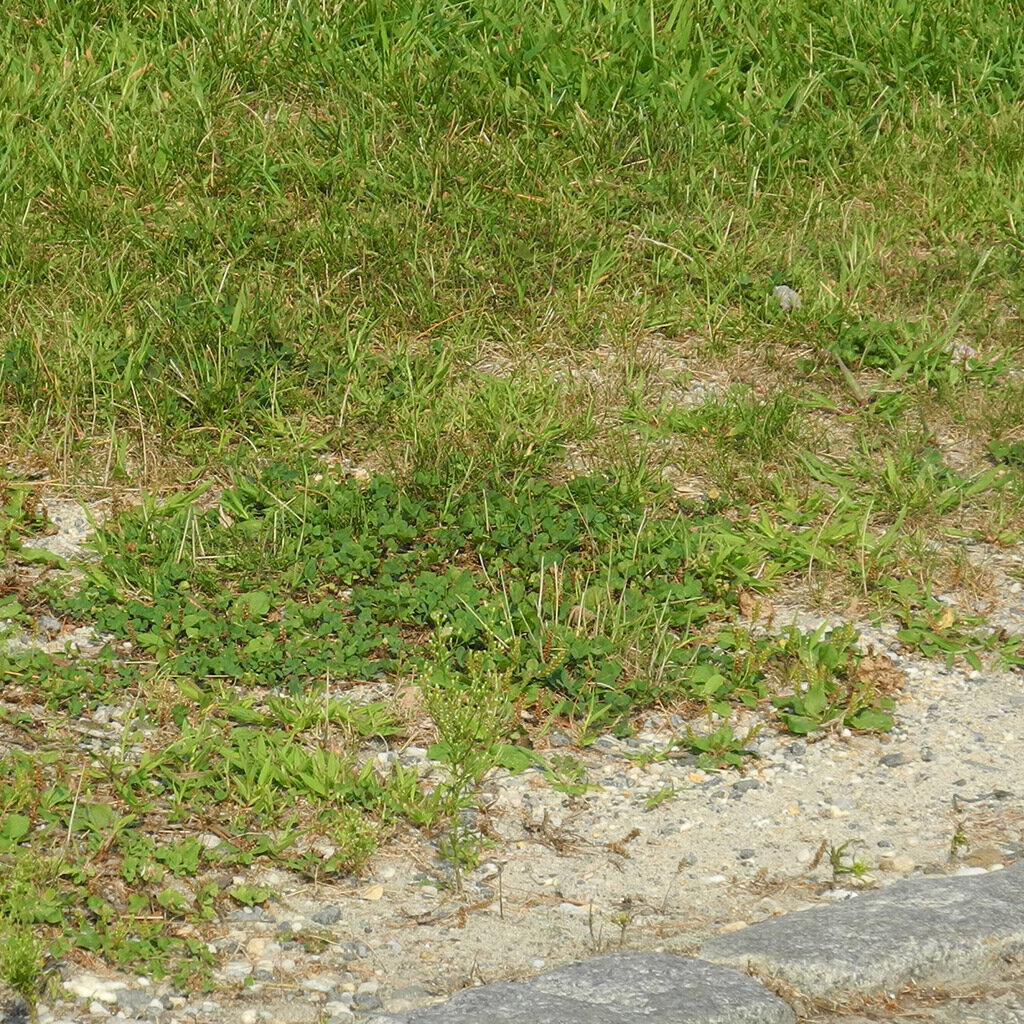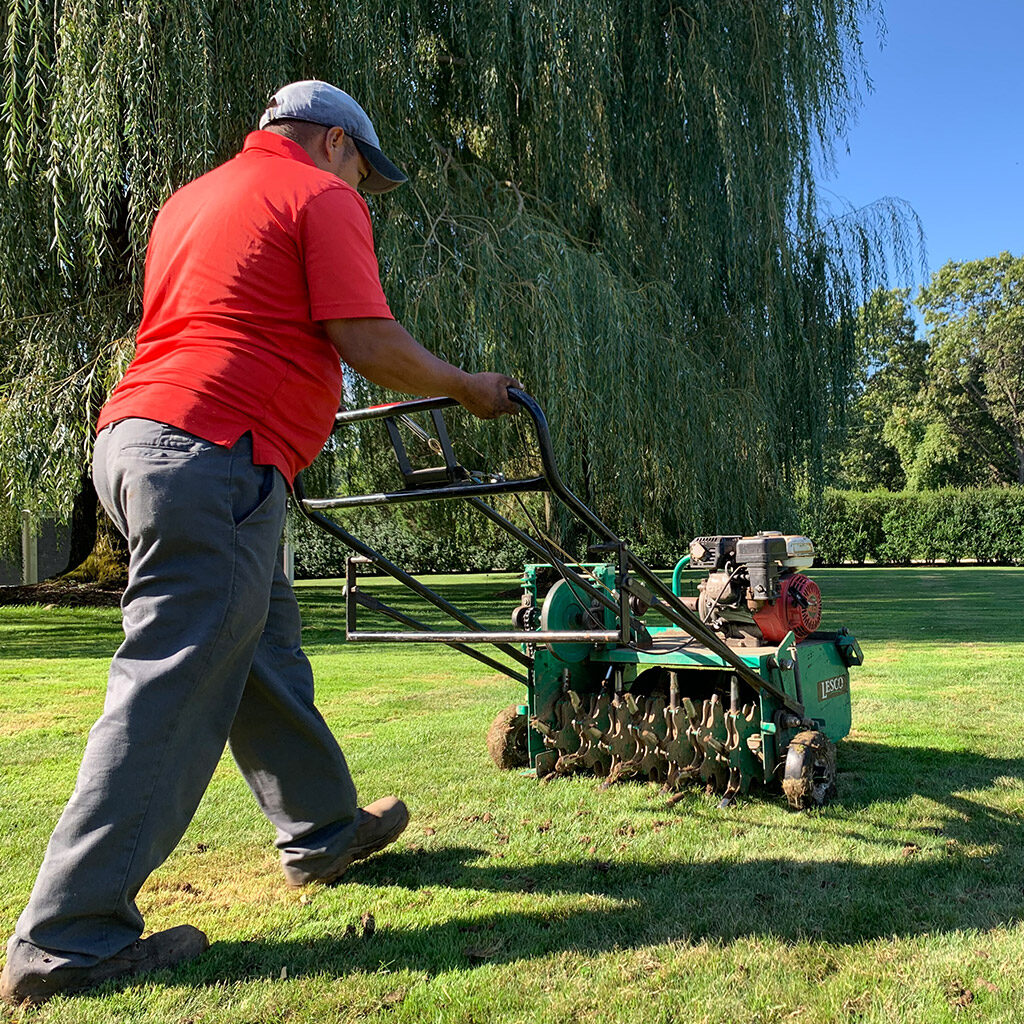Been living with a less than desirable lawn? If you’ve been working from home for the past 5-6 months, you’ve probably had more time to look at your lawn than ever before. And if it’s not what you want, your timing couldn’t be better to create that green space called a lawn.
Late August through early October is the best time to renovate a lawn on Long Island. Here’s why.
We grow cool season grasses on Long Island—perennial rye, Kentucky bluegrass, and fescue. They grow best during warm days and cool nights, typical of LI fall weather. Sure, you’ll find zoysia lawns, but zoysia is a warm season grass (think southern weather). You can always spot a zoysia lawn because it’s often dormant (brown) for months before it slowly begins to green up in late spring/early summer. Cool season grasses emerge from their winter dormancy in early spring and can remain green through early winter.
We often enjoy an extended fall on Long Island, allowing the lawn to grow and establish before the snow flies. And there’s less weed competition in the fall. Translation: no crabgrass to contend with.
Tackling the lawn renovation now means you’ll be a major step ahead next spring! Renovation can be done in the spring, but spring seeded lawns can face the challenges of weeds like crabgrass, insect and disease issues, and the looming possibility of summer drought, heat and humidity in the months ahead.

It’s time to ask yourself: is it a DYI, or should you have it done for you? As with any project, it’s best to go in with eyes wide open before you decide. Do a quick site assessment. If it’s more than 50% weeds and bare spots, renovation is best. Spot seeding isn’t going to get the job done.
The bigger question: if you decide to take on the renovation yourself, do you have the needed equipment, time, and all the sweat equity that goes into making a new lawn? It’s all on you if it’s a DIY.
If you decide to let a company tackle the renovation, always hire professionals, as the end results will be well worth it. Quality grass seed, trained crews, the right equipment, and necessary follow-up communication should be a given when you sign on. Ask for before and after pictures of their projects so you can see the difference. Then the real work can begin.

The proper renovation approach is a time consuming, but necessary, evil. The lawn is literally scalped to remove any dead/existing grass and debris. (You have to go from totally ugly to get to beautiful.) An aerating machine is used to pull up cores of debris and soil. This procedure opens up the soil to encourage needed oxygen and moisture penetration for the seed once it begins to germinate, and for better long-term growth. Core aerating the lawn, in two different directions, provides best results.
Proper grading takes time and patience. Gullies and holes should disappear when screened topsoil is added to achieve a level grade before seeding begins.
A quick word about the importance of soil pH: lawn grasses grow best within the range of 6.2-6.8. A baseline pH test will tell if the lawn needs lime, and if so, how much. The right pH range allows nutrients to be available to the lawn to maximize growth.

When it’s time to seed, it’s important to match the mixture of seed to the site—sunny versus shady areas—for best results. After the lawn has been seeded, fertilizer and lime (if indicated by a pH test) are applied.
The most critical need of a newly-seeded lawn is water. Whether you have an irrigation system or you drag a hose, it cannot be emphasized enough—without adequate water, the seed cannot germinate and grow! Protect the investment you just made, and water properly. If you’ve contracted with a landscape company to do the work, they will be able to assist you with when and how to water.
Within a week or two, you’ll see those beautiful green blades emerging from the soil. As the seed continues to emerge and fill in, you’ll be delighted by your new green space called a lawn.
